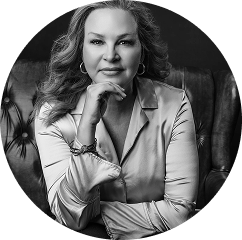
When you own a strata property in British Columbia, a portion of your strata fees goes towards the Contingency Reserve Fund (CRF). This fund is essential for the long-term financial health and maintenance of the strata property. Here’s a detailed explanation of how strata fees are determined, what the CRF is, how it is used, and how it is managed.
Determining Strata Fees
Strata fees are calculated annually based on the budget prepared by the strata council and approved by the owners at the Annual General Meeting (AGM). The process involves the following steps:- Budget Preparation: The strata council drafts a budget that includes anticipated operating expenses and required contributions to the CRF.
- Approval at AGM: The proposed budget is presented at the AGM, where owners vote to approve it. A majority vote is needed for approval.
- Fee Calculation: Once the budget is approved, strata fees are calculated based on each unit's unit entitlement. Unit entitlement is typically based on the square footage of the unit in relation to the total square footage of all units in the strata. This means larger units will pay higher fees than smaller units.
- Monthly Payments: Owners are informed of their monthly strata fee amount, which they are required to pay typically on a monthly basis.
Contribution to the Contingency Reserve Fund (CRF)
A specific portion of the strata fees collected is allocated to the CRF. The exact percentage can vary, but according to the Strata Property Act in BC, the minimum annual contribution to the CRF must be at least 10% of the total annual operating budget. However, many strata corporations choose to contribute more to ensure they have sufficient funds for future expenses.What is the Contingency Reserve Fund (CRF)?
The CRF is a savings fund designated for major repairs and replacements of common property and assets in the strata corporation. It acts as a financial buffer to cover unexpected or large-scale expenses that cannot be accommodated within the regular operating budget.How is the CRF Used?
The CRF is used for significant expenses that extend beyond routine maintenance. Common uses include:- Roof Replacement: Replacing the roof of the building when necessary.
- Exterior Painting: Repainting the exterior walls of the buildings.
- Plumbing and Electrical Upgrades: Major repairs or upgrades to the building’s plumbing and electrical systems.
- Elevator Overhaul: Comprehensive repairs or replacement of elevator systems.
- Structural Repairs: Addressing structural issues such as foundation repairs.
Management and Regulation of the CRF
The management of the CRF is governed by specific regulations to ensure transparency and proper use of the funds:- Separate Account: The CRF must be held in a separate account from the operating funds of the strata corporation.
- Spending Approval: Withdrawals from the CRF generally require approval by a majority vote at a general meeting. For emergency repairs that require immediate action, the strata council may authorize the use of CRF funds without prior approval, but they must inform the owners as soon as possible.
- Financial Reporting: The strata corporation must provide an annual financial report to all owners, detailing contributions to and expenditures from the CRF.
- Depreciation Report: Strata corporations are encouraged to obtain a depreciation report every three years. This report assesses the condition of common property and assets, estimates their remaining lifespan, and provides a financial plan for future repairs and replacements. This helps in planning adequate contributions to the CRF.
Conclusion
Understanding the CRF and how strata fees are allocated is crucial for strata property owners. The CRF ensures that there are funds available for major repairs and replacements, helping to maintain the property’s value and preventing large, unexpected expenses. Proper management and regular contributions to the CRF contribute to the financial stability and longevity of the strata property. If you have any further questions or need specific information about your strata's CRF, consulting your strata council or property manager is recommended.Disclaimer:
The information provided in these posts are for general purposes only. It is not written nor intended to provide legal advice or opinions of any kind. No one should act upon, refrain from acting, based solely upon the materials provided & recorded, or through any hypertext links and other general information, without first seeking appropriate legal and/or other professional advice.

